Meat Rabbits: Tips for Raising Them
Are you thinking about buying meat rabbits and raising them on your land until it’s time for slaughter? If so, you need to know some essential tips that will help you have the most success. There are many different breeds to choose from, and it’s important to know what types of conditions your rabbits will need before you get started.
Be aware that I haven’t raised rabbits as pets or for meat production, but I do think it’s useful for all my readers to know about these kinds of self-sufficiency options and opportunities. I think we will all be raising birds and small animals if we want meat for dinner.
Mark and I are planning on raising chickens, rabbits, and even quail. I could easily be a vegetarian, Mark, not so much. So, we will soon be taking on a new adventure in our lives.
Years ago, we watched our neighbor’s rabbits if they went on a short vacation. It wasn’t until many years later that one of my daughters said they raised the rabbits for meat. I truly thought they were pets.
If you can properly feed them, provide them with enough space, and give them the nutrition that keeps them growing, you can successfully raise dozens of meat rabbits on your land over the years. I highly recommend my friend, Janet Garmen’s “Habitat Housing for Rabbits” book.
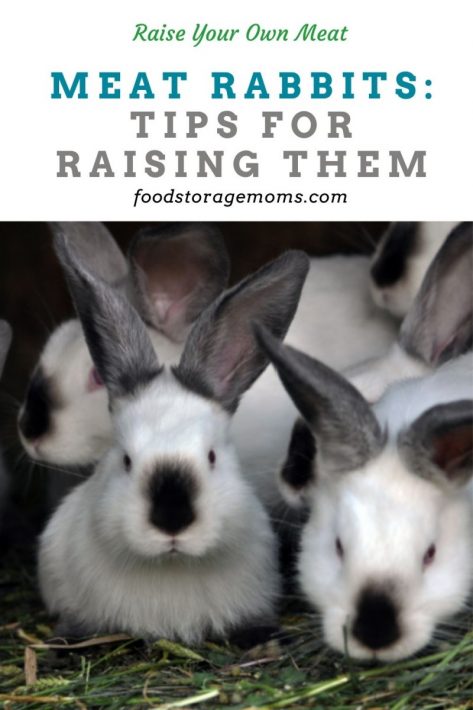
Choose the Best Rabbits to Raise
Before you get started, it’s a good idea to learn more about the best rabbits to raise for meat purposes. You wouldn’t want to invest in rabbits that are too small and not producing enough meat because then you could experience a financial loss instead of a return on your investment.
Some of the best rabbit breeds to choose for meat-related purposes include the Californians and New Zealand rabbits. While these options are ideal for meat, a few other breeds can grow large enough within a short timeframe to produce enough meat to eat or sell.
When you’re choosing the best rabbits to raise, consider the breed and the price. You may get a deal if you’re willing to buy multiple rabbits at one time. However, it depends on where you’re getting them. Some distributors offer discounts at certain times of the year.
It’s good to look for deals because you can earn more on your investment when you decide to sell the meat from these rabbits after they get slaughtered.
Red New Zealand Meat Rabbits
The New Zealand breed of meat rabbits come in a number of colors which are recognized by the American Rabbit Breeders Association. They include white, which happens to be one of the most popular, black, broken (mixture of white with one of the other colors), and red, which is pictured below. Many rabbit breeds have been developed in California, even the New Zealand breed that was originally brought from the country. They have proven to be very popular for both food production and the fur trade. Their popularity is mainly a result of their large size since it prompts more meat and fur.
You can generally expect to be able to slaughter this breed at about two months if raised properly. They average approximately 11 pounds at slaughter age. This breed does mature pretty quickly with some does becoming fertile at 8-12 weeks. You are better off to wait some additional time and allow them to mature before breeding them for the first time. You may want to consider the 16-17 week age for best results. Note that if you have kids they can become very attached to this breed since they are so mellow and lovable. If you decide to keep some as pets, count on them living between 5 to 8 years.
The New Zealand breed is very adaptable and can tolerate most all climates. One side issue to consider, this breed has been a favorite for use as lab animals too. You may want to consider checking into the typical distribution network in your area for New Zealand rabbits for laboratory use in case that is another source of income from your rabbit raising efforts.
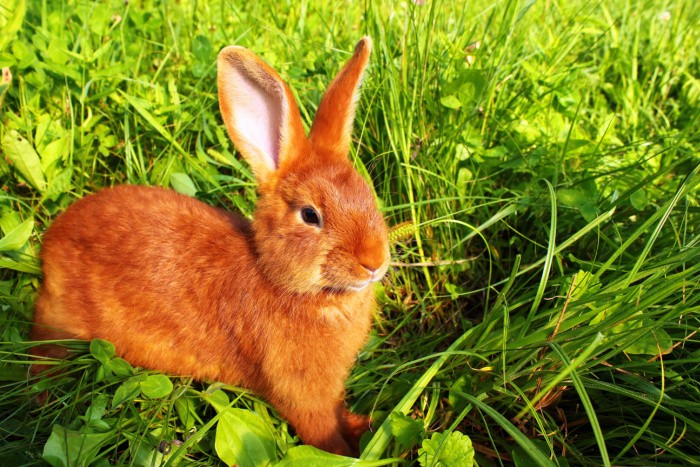
California Meat Rabbits
As mentioned, the California meat rabbits are also very popular to raise for meat and fur. Although not as large and often referred to as medium and size, they do give New Zealand breeds a run for their money when it comes to fur and meat production. They have become a prized breed for those running backyard farms designed to raise and slaughter a volume of rabbits.
This breed reaches their sexual maturity in about 6-7 months, but again, it’s good to let them age a little more for the best breeding results. They can weigh between 8-11 pounds, but it’s felt that the ideal weight for butchering is less than that when tender meat is the main goal. Note that does tend to weigh more than their buck counterparts. It is felt that this breed is a good one for those starting out in the rabbit breeding business based on their size and disposition. They a pretty docile and don’t get too upset if left confined for extended periods.
You should allow about 24″ to 30″ inches for the wired cages for each of your rabbits. If multiple rabbits are housed together they can tend to get more aggressive and cause harm to each other and the breeders themselves. From my research, it appears that this breed will live about 5-10 years if kept as a family pet.
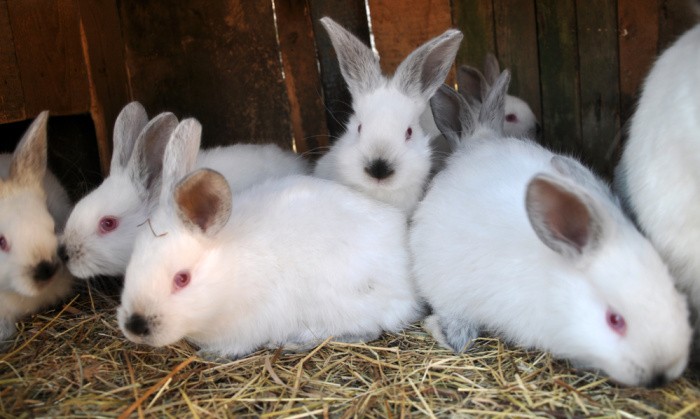
Keep the Conditions Clean and Comfortable
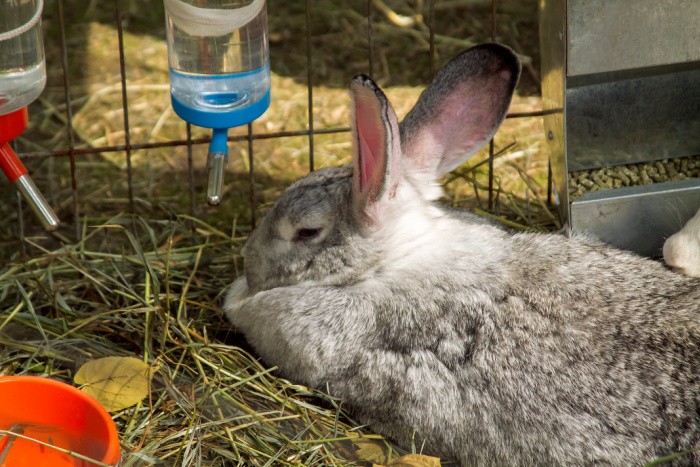
While you know that you’re raising these rabbits for meat and not as pets, it’s still essential to keep their conditions clean and comfortable. You don’t want rabbits living in crowded and uncomfortable quarters because then it makes it difficult for them to reproduce or move around freely like they enjoy doing.
Rabbits need to have space to roam around and explore. It’s what they like to do! So, choose the best area on your land that will provide your meat rabbits with space to get from one place to the next without jumping on top of one another.
Provide Them with Clean and Comfortable Bedding
Matt T. was kind enough to share his rabbit hutch he purchased and is waiting to start raising meat rabbits. I love it!

Take good care of the space where your rabbits are spending most of the time. You don’t want them sitting in their feces because that creates unhealthy and hazardous conditions, not just for you, but for the rabbits, too.
Be sure to make a habit of cleaning the area, removing feces, and providing the rabbits with more than enough clean and dry bedding to use for nesting and keeping themselves comfortable.
You can buy bedding for rabbits at most pet supply stores. When you have dozens of rabbits living on your land, it’s best to buy the bedding in bulk because you will go through a lot of it.
Don’t be surprised at how filthy it can get if you’re not keeping up with removing the feces and changing the bedding periodically. While rabbits are adorable animals that love running around, they’re also messy animals that can quickly get into things.
Provide the Rabbits with the Right Foods
Always have enough food for your rabbits to eat. After all, you want them to produce enough meat for you to have for your family and to sell to other people. If the rabbits aren’t getting bigger, they’re not going to produce the most meat possible, which is why you need to offer plenty of food for them to consume.
Keep in mind that rabbits are prone to get dehydrated. Make sure you have clean and fresh water for them to drink at all times. Another suggestion is to keep them in pens where much of the day they are in the shade. If there is a cool breeze in one location over another, take the one with the most ventilation. It’s also important that the rabbits don’t get too cold or wet. You may want to think about them liking temperatures and weather much like you do.
Rabbits Enjoy Rabbit Chow, Hay, Fruits, and Vegetables
Most breeders feel that rabbit chow is the best source for the protein they need to develop the muscle meat desired. Be sure to provide an ample supply of hay that is easily accessible to the rabbits. You want them to have a chance to eat whenever they get hungry, making it a good idea for you to have hay and other foods in different spots where the rabbits are roaming if penned outside.
They may stop and begin chewing on the foods as soon as they feel hungry.
While hay is a must, you may want to give the rabbits other foods while you’re raising them for their meat. Fresh fruits and veggies are always a good option. Rabbits like to eat oats, carrots, turnips, apples, celery, and other fruits and vegetables that you may have at home.
If you’re growing some produce on your land, you should consider harvesting it and supply the rabbits with these fruits and veggies as an extra treat. The rabbits will enjoy the food, and you will look forward to seeing them get bigger before they get slaughtered for their meat.
Be careful as you add new foods, it’s best if we see what food they will like and digest well. You can add more as you discover what they like and don’t like.
Know When It’s Best to Slaughter the Rabbits
Not knowing when to slaughter the meat rabbits is one of the biggest mistakes people make when they first start raising these rabbits. You don’t want to send the rabbits off for slaughter too soon because they may not be as big as possible and you won’t get as much meat from them.
Instead, try to wait it out until your rabbits reach about ten weeks of age. Once they’re ten weeks old, they’re usually large enough to produce plenty of tender flavorful meat.
You Can Also Hire a Butcher
If you don’t plan to slaughter the rabbits you’re raising, you can always find a butcher who’d be willing to do it for you.
However, you’ll need to consider the cost of hiring someone else to lend a helping hand with skinning the rabbits and then cutting their meat into different sections that you can sell.
What Is the Cost and Income I Can Expect?
I’ve found from my reading that good quality / well-bred rabbits can cost about $40 to $50 from a breeder if bred as pets. If you are looking for high-quality rabbits for meat and fur production you’re looking at $65 to $80 each. Of course, pricing can be different based on your location.
When it comes to selling the meat, again, it varies by location, but generally, it will sell for about $6.00 per pound. With meat shortages being experienced right now, it could certainly sell for more unless things improve.
Another source of income from your rabbit raising efforts can be from selling the fur pelts. They can range from $1.50 to $30.00 per pelt. That is a wide range in pricing, but it’s based on your location and the color, quality, and size of the pelt.
An interesting sidelight is that there are other sources of income if you want to consider expanding your rabbit raising venture:
- Collecting and sellling the rabbit manure as a fertilizer.
- Use the collected rabbit manure as a worm farm and sell the worms.
- Selling your rabbits as pets.
- Sell the baby rabbits (pinkies) as food to pet stores and those raising snakes.
How can I use the Meat Rabbits I raise?
- Barbecue on the grill
- Smoke it
- Cook it in an InstantPot
- Fry it in a frying pan
- Bake it in the oven
- Bake it in a Sun Oven
- Use the meat in soups or casseroles
What does rabbit taste like?
When I talk to people the consensus is it tastes a lot like chicken. The texture may be a bit different and it is typically on the dry side compared to chicken.
When cooking rabbit what internal temperature is needed?
For safety, USDA recommends cooking rabbits to an internal temperature of at least 160 °F. or 71 °C. I highly recommend the use of a food thermometer to be sure that your rabbit is safe to eat.
Breeding Meat Rabbits:
I quote Raymond Dean White, “I recommend starting small. One doe and one buck (they must be kept in separate cages except when you want to breed them) will easily supply enough meat for two people and if you don’t keep up with slaughtering their brood you will quickly get overwhelmed and you’ll be gifting rabbit meat to ALL your neighbors.” Author, “Bugging In-What To Do”
Final Word
When you raise meat rabbits that you can send off to have butchered and then eat or sell the meat, choosing suitable rabbits is essential. Several breeds grow quickly to a much larger size, making it possible for you to get more meat from them.
In addition to choosing the right breed, be sure to supply the rabbits with plenty of hay, fruits, and vegetables to keep them from going hungry.
Finally, keep the conditions clean for the rabbits to give them space to roam freely and enjoy themselves while living on your land. May God Bless this world, Linda
Copyright Images: California Breed Rabbits Deposit photos_324990638_s-2019, Californian Young Rabbits AdobeStock_136895084 by orestligetka, Red New Zealand Rabbit AdobeStock_117993206 by aquatarkus, Grey Rabbit in Cage on a Farm AdobeStock_228811967 by irina_g

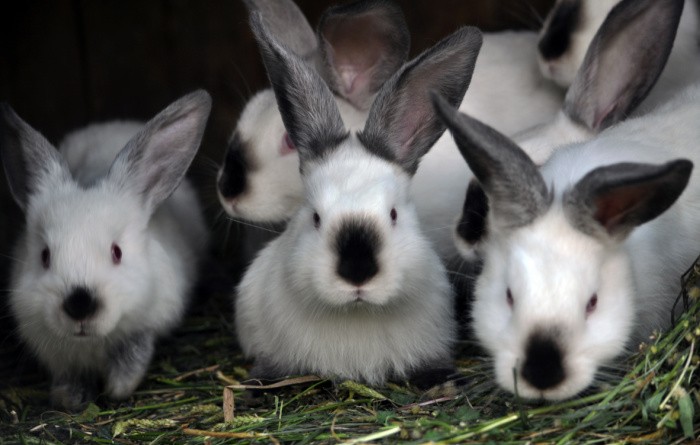

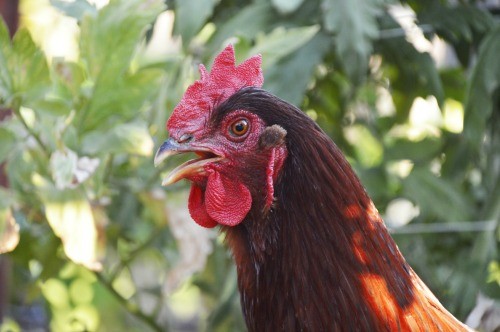
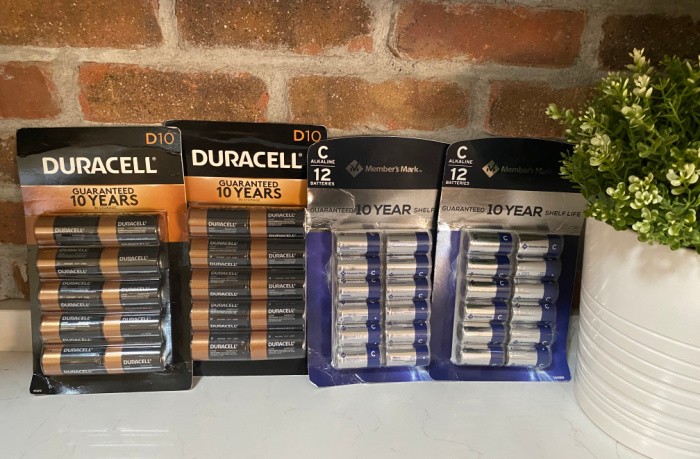
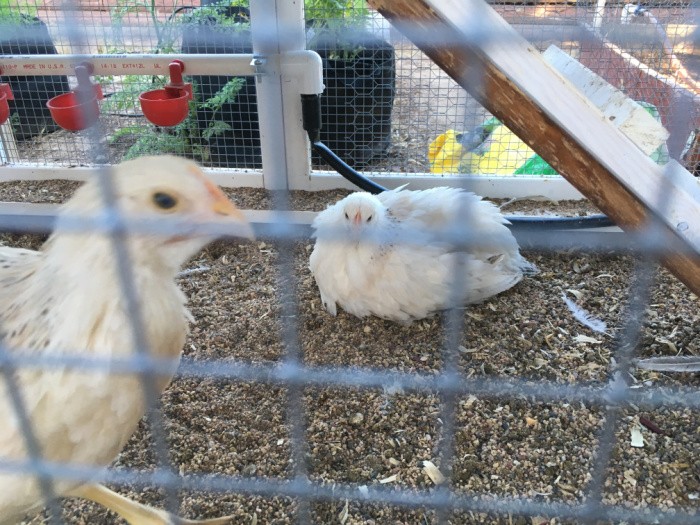


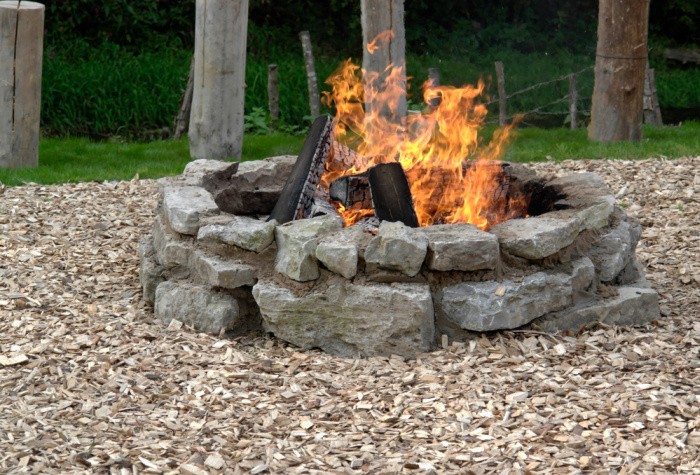









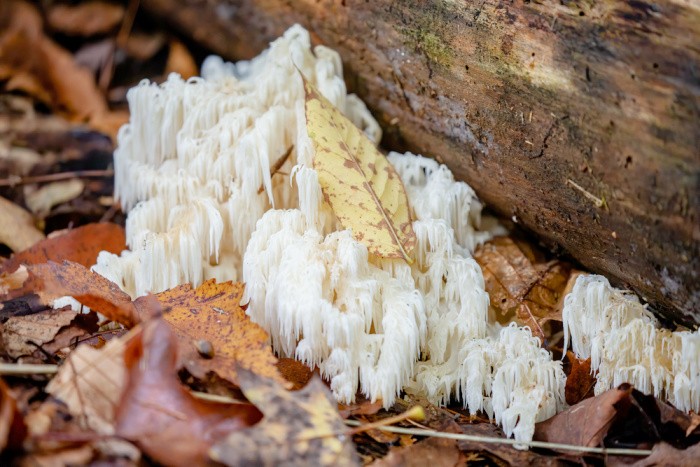




Oh Linda, this brought back memories! When I was growing up, we had neighbors who raised rabbits. Us kids would hold them and pet them. It was a few years later that I found out they used them for meat! I always wondered why they would thin them out and then there would be more when the babies were born. Ha!
Hi Paula, see, I did thought the same thing! Now, I have the giggles! I am not alone! I love this!! Linda
Linda,
Here’s a link to an article I wrote a few years ago on raising rabbits for meat. When I was a kid we raised meat rabbits on our farm, so a few years back Jane and i decided to add meat rabbits to our chicken raising experience. For two years we were able to keep up with our bunnies meat production but when that large branch fell and killed our chickens it also smashed open our hutch–which was butted up against the coop. Those rabbits that weren’t killed outright, escaped into the wild. When I rebuilt the coop we decided to take a break from rabbit raising and we haven’t gone back to it yet–but we will. I like rabbits for meat and chickens for eggs, but both together can be some work.
I recommend starting small. One doe and one buck (they must be kept in separate cages except when you want to breed them) will easily supply enough meat for two people–and if you don’t keep up with slaughtering their brood you will quickly get overwhelmed and you’ll be gifting rabbit meat to ALL your neighbors.
The article contains lots of good information and several links to other informative sites.
Here’s that link–it’s to Volume 27 of my Dying Time Newsletter and the part you’re looking for is in the Prepper Information section so just page down to it: (http://www.)raymonddeanwhite.com/newsletter27.html
Cool I’m gonna read up
I’m glad he added this too! Linda
Hi Ray, please check your email, I just sent you a message. I LOVE LOVE LOVE your comment. I’m going to copy and paste with attribution to you. Great tips! Linda
This is actually in my plan. I’d built the hutch and got everything and covid hit and I couldn’t find a rabbit anywhere except those indoor ones and that ain’t happening.
One lady even had hers litter box trained. Still a no cause they are nothing more than food for my uses.
Hi Matt, LOL! You are so funny! I have the giggles! Yeah, it’s now about having meat on the table. Love your comment, Linda. Send me pictures of the rabbit hutch to my phone when you have time. I will share it if it’s okay with you. Linda
I agree with Matt. I love fried rabbit. They are all white meat. If you have a problem killing them , yes get someone else to do it. They squeal when you try to kill them but once you get over that , they are the easiest to skin. We just used to cut around the head and top of the legs and pull. the skin. It just pulls off. At least that is what I remember. Be sure to tan the skin. Yes, keep the buck and doe apart ! They will need to be kept warm in very freezing temps. We lost some in NV due to that.
Hi Cheryl, I will have to remember that, thanks for the heads-up! We may all be raising meat rabbits. Linda